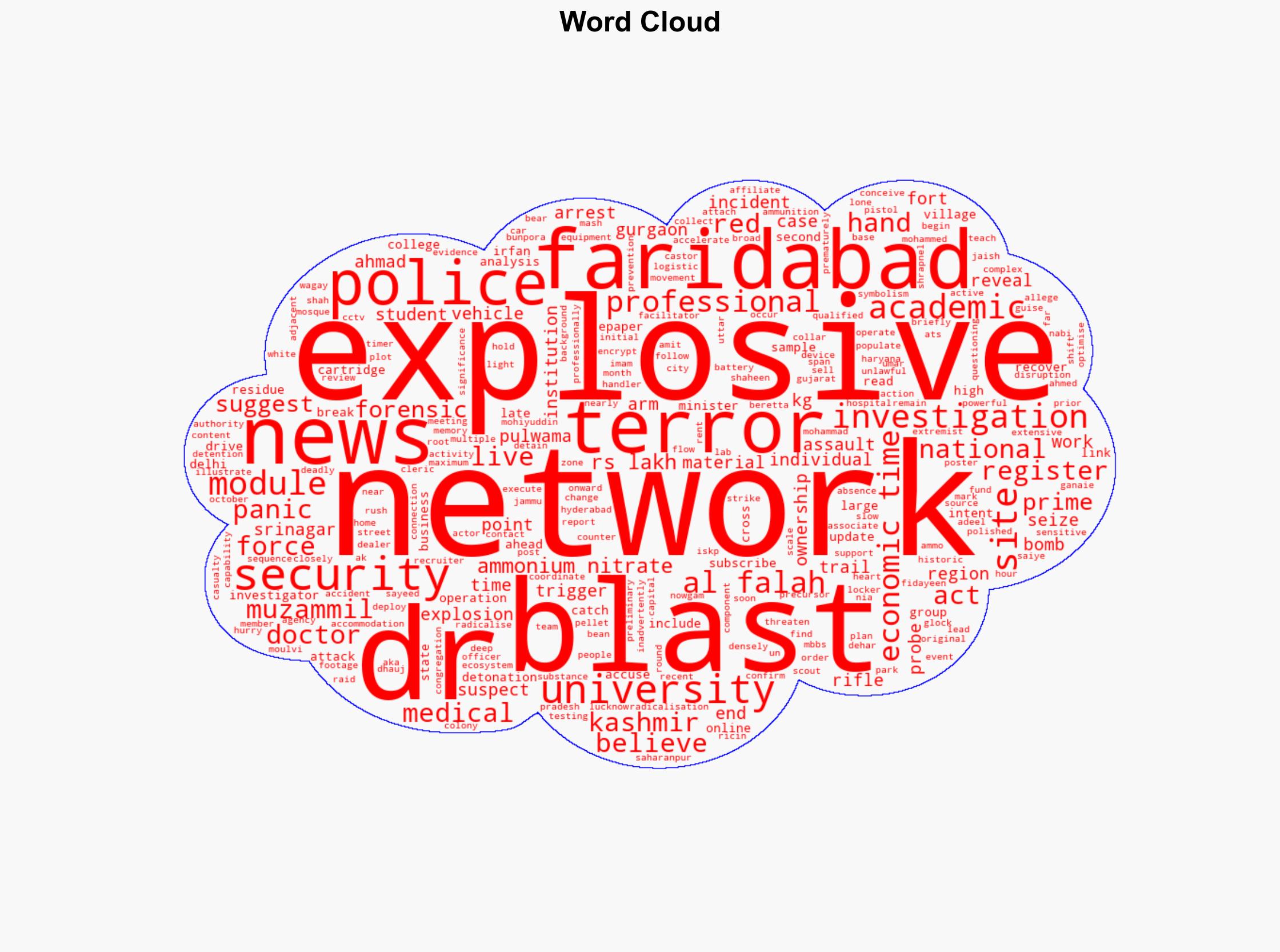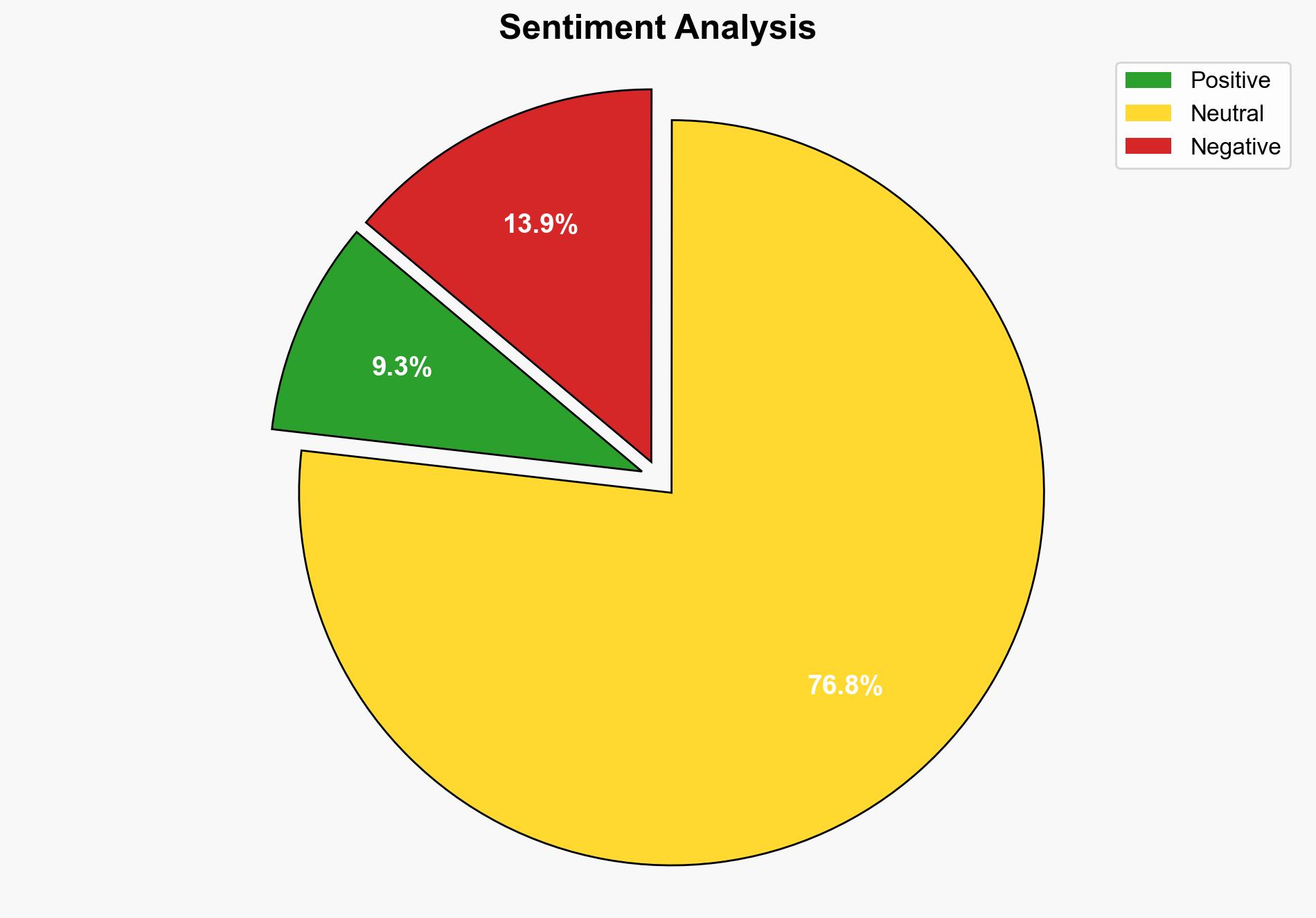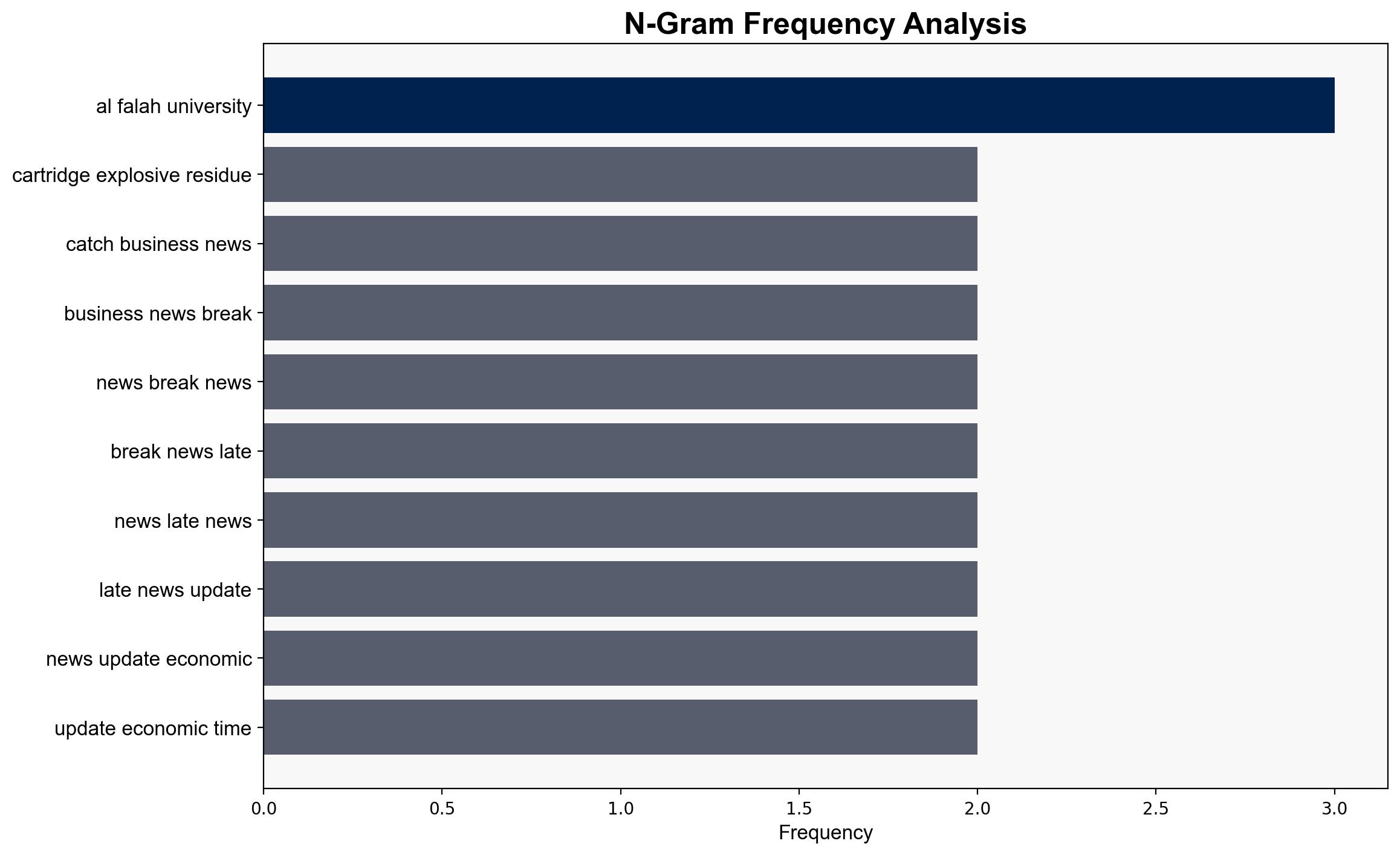Delhi Red Fort blast case Explosive unravelling of an inter-state terror network in a killer explosion’s wake – The Times of India
Published on: 2025-11-12
AI-powered OSINT brief from verified open sources. Automated NLP signal extraction with human verification. See our Methodology and Why WorldWideWatchers.
Intelligence Report: Delhi Red Fort blast case Explosive unravelling of an inter-state terror network in a killer explosion’s wake – The Times of India
1. BLUF (Bottom Line Up Front)
The investigation into the Delhi Red Fort blast suggests the existence of a sophisticated inter-state terror network with potential links to Jaish-e-Mohammed. The most supported hypothesis is that the blast was an unintended premature detonation of a larger coordinated attack plan. Confidence level: Moderate. Recommended action includes enhancing inter-agency coordination, increasing surveillance on academic and medical institutions, and strengthening cross-border intelligence sharing.
2. Competing Hypotheses
Hypothesis 1: The explosion was an unintended premature detonation of a larger coordinated attack planned by a terror network.
Hypothesis 2: The explosion was a standalone act by a lone actor or a small cell with limited capabilities.
Assessment: Hypothesis 1 is more likely due to the involvement of multiple individuals across states, the seizure of large quantities of explosives, and the professional backgrounds of the suspects, indicating a structured network. Hypothesis 2 is less supported given the complexity and scale of the materials and planning involved.
3. Key Assumptions and Red Flags
Assumptions include the belief that the suspects’ professional backgrounds facilitated their covert operations. A key red flag is the potential for deception in the suspects’ academic and medical affiliations, which may serve as fronts for terror activities. The rapid change of vehicle ownership and the presence of ammonium nitrate are indicators of organized planning.
4. Implications and Strategic Risks
The unraveling of this network poses significant national security threats, including the potential for future coordinated attacks. The involvement of professionals suggests a shift towards a “white-collar” terror ecosystem, increasing the difficulty of detection. There is a risk of political escalation if links to cross-border entities are confirmed, potentially straining diplomatic relations.
5. Recommendations and Outlook
- Enhance intelligence sharing between states and with international partners to track cross-border terror activities.
- Increase surveillance and vetting processes in academic and medical institutions to prevent radicalization.
- Conduct regular security drills and public awareness campaigns to prepare for potential future attacks.
- Best-case scenario: Successful dismantling of the network with no further attacks.
- Worst-case scenario: Escalation to a series of coordinated attacks across major cities.
- Most-likely scenario: Continued sporadic attempts by remaining network members, requiring sustained counter-terror efforts.
6. Key Individuals and Entities
Dr. Muzammil Ganaie, Dr. Adeel Ahmad, Dr. Shaheen Sayeed, Dr. Umar Mohammad Un Nabi, Dr. Ahmed Mohiyuddin Saiye, Moulvi Irfan Ahmad Wagay.
7. Thematic Tags
National Security Threats
Structured Analytic Techniques Applied
- Cognitive Bias Stress Test: Expose and correct potential biases in assessments through red-teaming and structured challenge.
- Bayesian Scenario Modeling: Use probabilistic forecasting for conflict trajectories or escalation likelihood.
- Network Influence Mapping: Map influence relationships to assess actor impact.
Explore more:
National Security Threats Briefs ·
Daily Summary ·
Methodology





